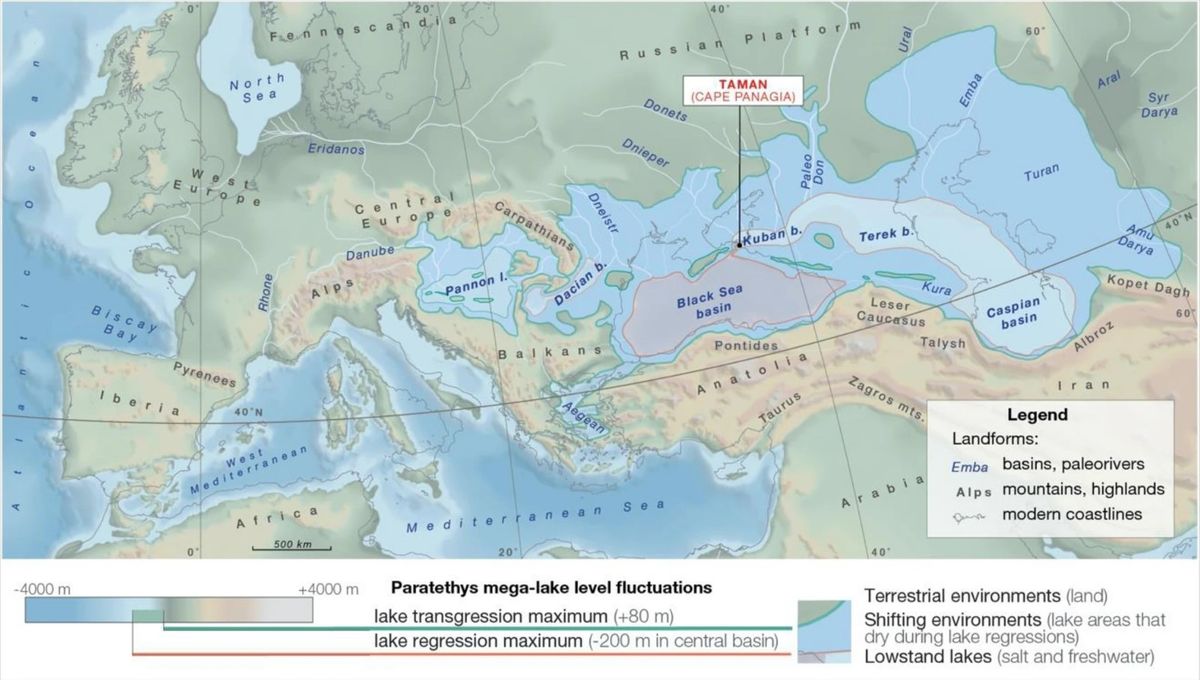
Existing around 34 million years ago, the Paratethys Sea was once the largest lake to ever exist on Earth. This large epicontinental stretch of water reached from today’s Austria to Turkmenistan, along the southern margin of Eurasia, covering an enormous 2.8 million square kilometers (1 million square miles).
The sea was formed through the uplift of orogenic belts in the Alps and Carpathian. This caused the formation of a basin with a southern connection to the Mediterranean Sea. Around 12 million years ago, however, a collision between the African and European tectonic plates caused this connection to be closed off, resulting in the reclassification of Paratethys as a lake.
Paratethys contained 1.77 million cubic kilometers (424,000 cubic miles) of water, that’s around 10 times more than all current-day lakes combined. Despite having a larger surface area than the Mediterranean Sea, Paratethys’s surprisingly shallow waters meant it carried around half of the Mediterranean’s staggering 3.75 million cubic kilometers (900,000 cubic miles) of water.
While the Mediterranean Sea was once fed fresh water through inland Europe’s many rivers and streams, Paratethys separation cut off this supply and concentrated the freshwater currents into the lake instead. This caused a change in the region’s flora and fauna as the area saw a shift from previously diverse marine species to a less diverse range of freshwater species.
The sheer size of Paratethys also meant it had a significant effect on the Eurasian climate. The water vapor created by the lake contributed to reducing the thermal gradient between seasons, encouraging a much more stable seasonal climate.
The Paratethys lake, however, didn’t last long as a period of “extreme drying” meant very little rainfall hit Eurasia, which meant the lake’s isolated waters would evaporate without being replenished by precipitation.
With much of the water evaporating between 9.8 and 7.7 million years ago, a period called the Great Khersonian Drying saw water levels drop by around 250 meters (820 feet). This saw the lake lose 70 percent of its surface area and 30 percent of its volume, reducing it to the size of today’s Black Sea.
The drying also affected the region’s established ecosystem. Dolphins, seals, and even the world’s smallest whale species (Cetotherium riabinini) that once lived in Paratethys were no longer able to survive the lake’s shrinking waters.
Species that relied on the lake for its water were also forced to leave the region. With many migrating to the plains of Africa, some of these species went on to evolve into the giraffes and elephants we see today.
The shrinkage also affected the Eurasian climate, and the once stable thermal gradient gave way to much colder winters and hotter summers.
As Paratethys continued to shrink it formed three distinct regions that are still around today. The Black Sea is located in Eastern Europe and Western Asia and covers 436,000 square kilometers (168,000 square miles). The Caspian Sea is the world’s current largest inland body of water, covering an area of 371,000 square kilometers (143,000 square miles) in the Middle East. And finally, the Aral Sea, which currently covers 68,000 square kilometers (26,000 square miles) but is continuing to shrink as a result of its own drying period caused by human activity.
Source Link: The Largest Lake On Earth Once Covered 2.8 Million Square Kilometers